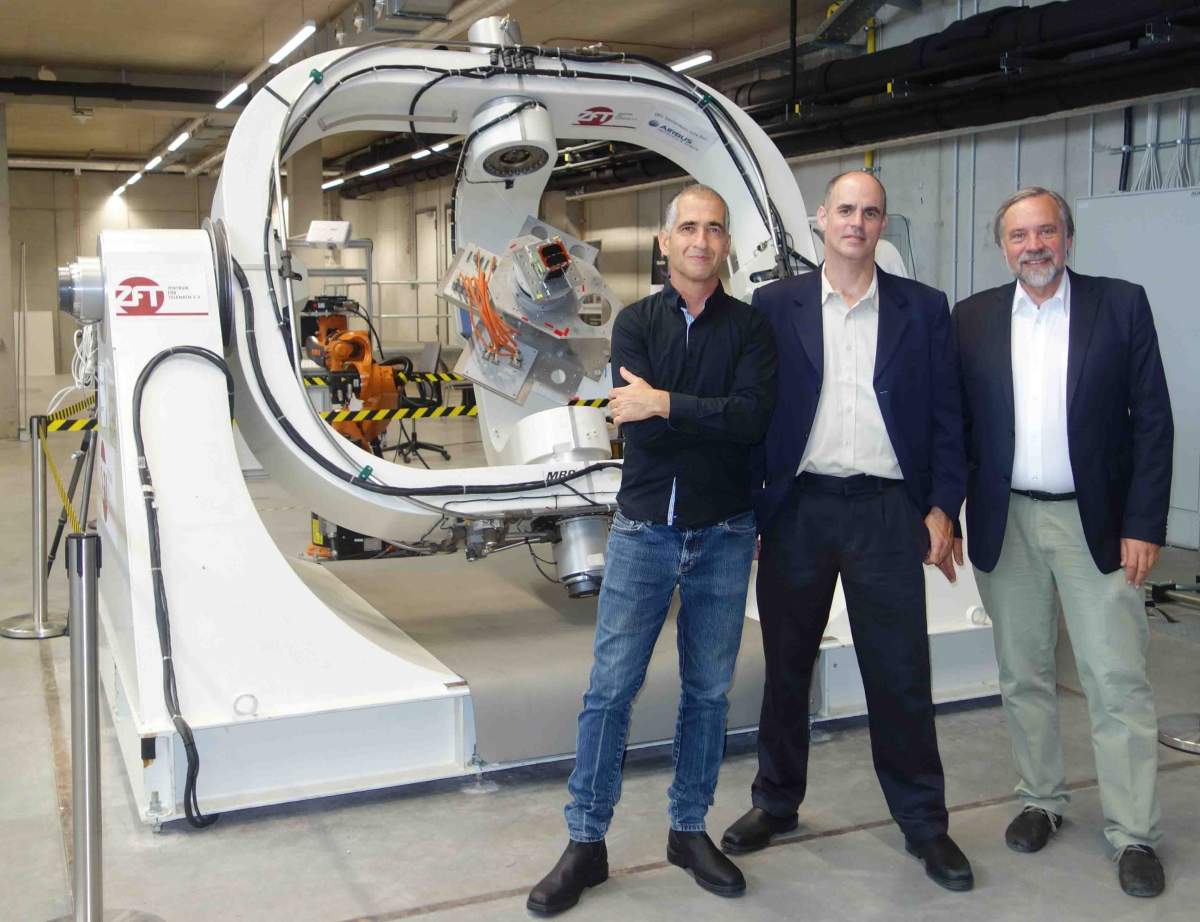Are you a journalist? Please sign up here for our press releases
Subscribe to our monthly newsletter:
Ten satellites, each around the size of a shoebox, are slated in a few years to enter orbit and begin filling in some gaping holes in our understanding of clouds and their role in climate. Inspired by medical CT (computed tomography), which observes and maps the interior of a patient, the designers are creating a system that will reveal detailed images of clouds‘ external and internal 3D structures and properties. By probing small cloud fields that are generally missed by today’s remote sensing technologies, the mission may resolve some major uncertainties that limit current atmospheric modelling and climate prediction.
This space mission, called CloudCT, was recently awarded €14 million by the European Research Council (ERC) Synergy program – the maximum sum that can be allotted from this program. Three investigators lead this unique interdisciplinary project: two Israelis and a German. Prof. Yoav Schechner of the Viterbi Faculty of Electrical Engineering at the Technion (Haifa) is an expert in computer vision and computed tomography. Prof. Ilan Koren is an expert in cloud and rain physics in the Earth and Planetary Sciences Department of the Weizmann Institute of Science (Rehovot). Prof. Klaus Schilling of the Center for Telematics (Würzburg) is a leader in the field of small satellite formation technology.
The mission may resolve some major uncertainties that limit current atmospheric modelling and climate prediction
Clouds have a key role in Earth’s energy balance and its water cycle; even small errors in assessing clouds’ properties can lead to major inaccuracies in climate predictions. “Satellites study large cloud structures, but lack the resolution to observe small clouds,” says Koren. “Although they are small, such clouds temper the climate, on the one hand, and on the other, they may be very sensitive to climate change. That is why there is a critical need to measure these small clouds properly – to understand their nature and their interplay with changing environmental conditions. CloudCT can pave the way to this understanding.”

The idea for probing these clouds from space was motivated by the technology of 3D medical imaging. “We are using human health as guidance for the planet’s health,” Schechner says. Something like the better-known medical CT, the images in CloudCT will be taken simultaneously from many directions around and above the clouds. This feat will be made possible by the networked, self-organizing formation of multiple, affordable, very small and very agile satellites. However, “Contrary to isolated clinic laboratory settings, Earth is irradiated by illumination from the Sun, which cannot be moved around or turned on and off. Our image-analysis algorithms must account for this reality and rely on light scattering, which challenges our task.”
The precision control required of the multi-satellite system (each satellite weighing around three kilograms) so as to conduct this complex imaging raises challenges in miniaturisation, as well as in coordination and autonomous reaction capabilities. Schilling professes excitement about the prospects of the CloudCT project: "The distributed networked satellite systems we are developing for CloudCT are an example of the ways that innovative software compensates for the deficits inherent in miniaturisation. This enables a self-organizing system to be implemented efficiently by such ultra-small satellites and for novel approaches to observation to help achieve scientific advances."
The images in CloudCT will be taken simultaneously from many directions around and above the clouds
The scientists are now building their teams and starting to work out details of the project. They will spend time designing and testing many aspects of CloudCT prior to launch. “This testing is assisted by a precursor mission of three satellites, called TOM - Telematics Earth Observation Mission, as well as our high performance dynamics simulator in Würzburg,” says Schilling. “This project will give us the opportunity to see and measure clouds as never before,” adds Koren. “We are very pleased that the ERC selected the CloudCT project,” says Schechner. “We can already say that CloudCT is pioneering new concepts of Earth observation and the development of sophisticated computational imaging algorithms.”
Prof. Ilan Koren’s research is supported by the Sussman Family Center for the Study of Environmental Sciences, which he heads; the Dr. Scholl Foundation Center for Water and Climate Research, which he heads; the Bernard and Norton Wolf Family Foundation; and Scott Eric Jordan.